Castlerigg Stone Circle: One Of Britain’s Most Important And Earliest Stone Circles
A. Sutherland - AncientPages.com - Prehistoric stone circles keep many secrets and fascinate ordinary people and researchers. One of the circles that has long been a puzzle, is located about 37 km (23 mi) southwest of Long Meg-Castlerigg, Keswick, Cumbria, in North West England.
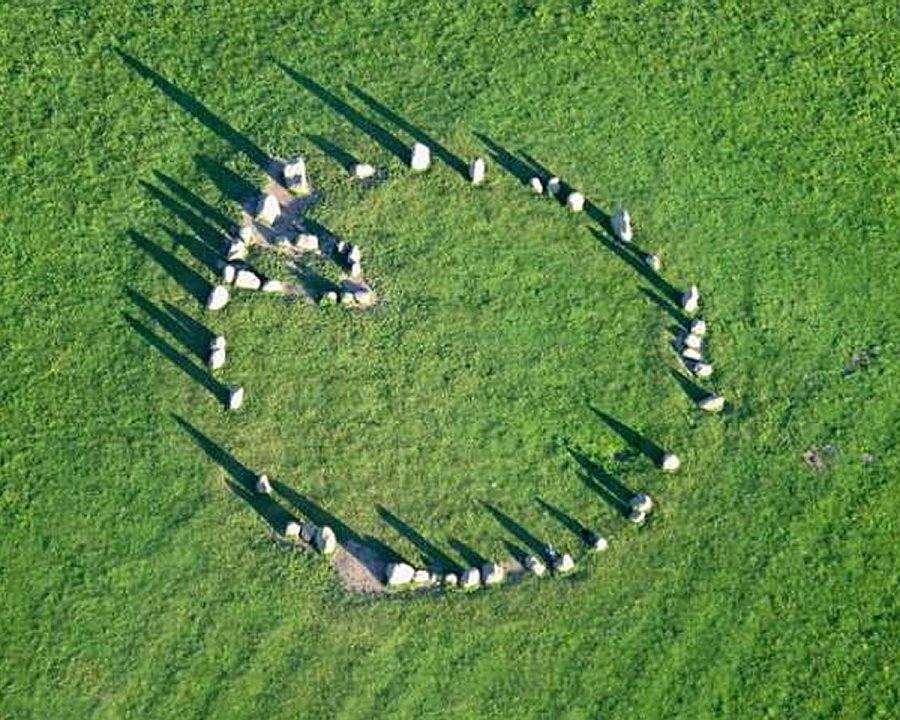 Aerial photo of the Castlerigg Stone Circle. Photo credits: Simon Ledingham
Aerial photo of the Castlerigg Stone Circle. Photo credits: Simon Ledingham
It is known as the Castlerigg Stone Circle or the the Keswick Circle in the older historical sources, and its exact purpose still remains unclear, but researchers believe that it was used for ceremonial or religious purposes.
Castlerigg Stone Circle was built around 4,500 years ago in the Neolithic times.
The circle, probably once had 42 stones, now consists of 38 granite stones arranged in a circle, approximately 32.6 x 29.5 m in diameter. Within the ring is a rectangle of a further 10 standing stones. The tallest stone is 2.3 meters high. It was probably built around 3000 BC – the beginning of the later Neolithic Period.
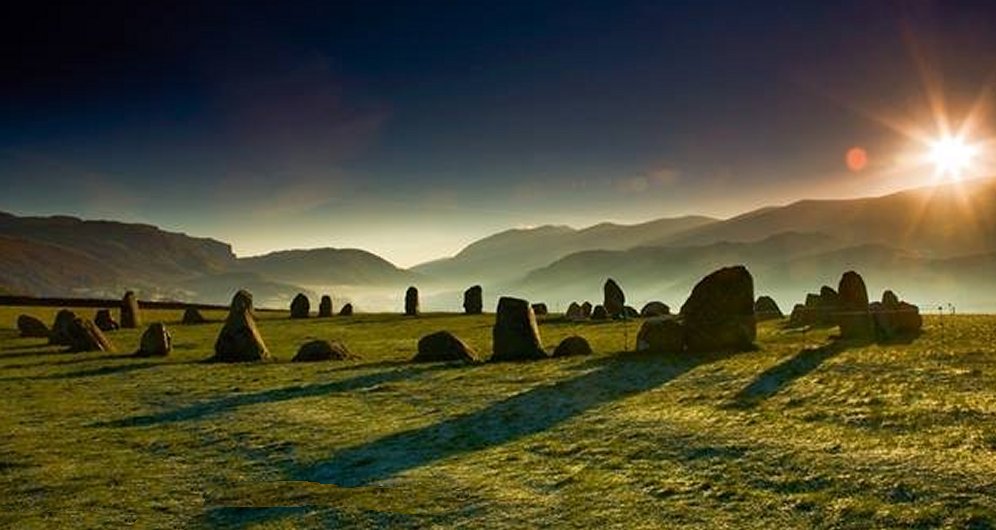 The stones are impressive many reaching 6ft/2m in height. Credits: Cumbria and the Lake District
The stones are impressive many reaching 6ft/2m in height. Credits: Cumbria and the Lake District
It is one of the earliest stone circles in Britain and one of the most important, due to its geometrical and astronomical alignments as well.
It was commonly regarded as a sacred space due to its specific surroundings, in form of a rectangular space on the eastern side of the circle slightly south of the east-west axis defined by ten stones and referred to as an adytum, or sacred place in pagan temples, entered only by priests.
This rectangular stone setting, known as the 'Sanctuary' was most probably added later to the circle.
The extraordinary feature at Castlerigg, has not been encountered in other stone circles in the British Isles.
Including the stones along the perimeter of the circle gives a total of thirteen stones in the rectangle. Interestingly, there are three distinct gaps in the rectangle which, if they once held stones, gives 16 as the total number of stones.
Prehistoric farming communities settled in the fertile, mountainous regions of the Lake District.
For the first time, the circle is mentioned in ‘Itinerarium curiosum; or, An Account of the antiquities, and remarkable curiosities in nature or art, observed in travels through Great Britain’ by William Stukeley (1687 – 1765), an Anglican clergyman and English antiquarian devoted to the archaeological research of the prehistoric monuments of Stonehenge and Avebury.
Stukeley wrote: " … for a mile before we came to Keswick, on an eminence in the middle of a great concavity of those rude hills, and not far from the banks of the River Greta, I observed another Celtic work, very entire: it is 100 foot in diameter and consists of forty stones, some very large.
At the east end of it is a grave, made of such other stones, in number about ten: this is placed in the very east point of the circle, and within it: there is not a stone wanting, though some are removed a little out of their first station: they call it the Carsles, and, corruptly I suppose, Castle-rig”.
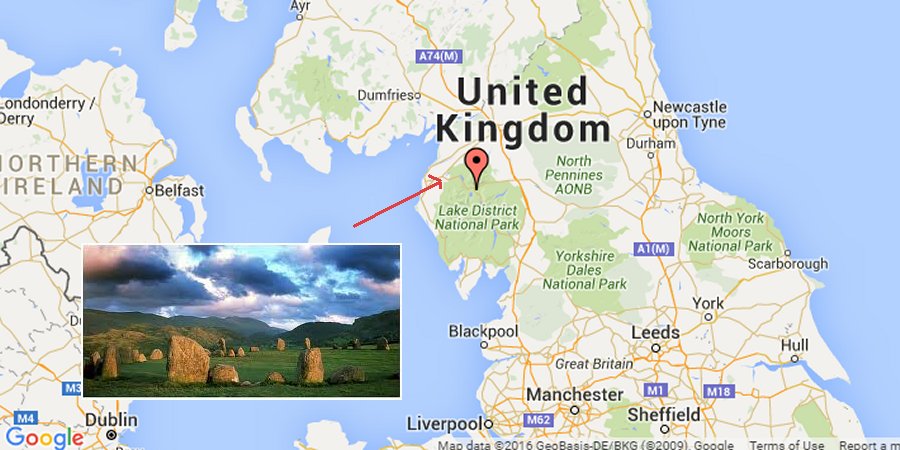 Neolithic-era stone tools were unearthed inside the circle and in the center of Keswick during the 19th century.
Neolithic-era stone tools were unearthed inside the circle and in the center of Keswick during the 19th century.
There are still many features at Castlerigg that have to be examined; Castlerigg has not been extensively excavated to determine whether it served as a trading place or as a religious center, or even both.
It is still unknown exactly what might be preserved beneath the surface of this fascinating stone circle. Three Neolithic stone axes were found in and near the Castlerigg stone circle in 1856 and 1875 and similar finds have been made at other Neolithic stone circles. The axes - almost never used - were often held as high status and something sacred may have been associated with them.
Megalithic stone circles were undoubtedly important meeting places for ancient people living within the scattered Neolithic communities, and the Castlerigg was one of them.
Written by – A. Sutherland - AncientPages.com Senior Staff Writer
Copyright © AncientPages.com All rights reserved. This material may not be published, broadcast, rewritten or redistributed in whole or part without the express written permission of AncientPages.com
Expand for referencesReferences:
English Heritage Visit Cumbria
A. Bevan, M. Lake, Computational Approaches to Archaeological Spaces
More From Ancient Pages
-
 Beer And Hallucinogens Reinforced The State Of The Wari Culture
Archaeology | Jan 15, 2022
Beer And Hallucinogens Reinforced The State Of The Wari Culture
Archaeology | Jan 15, 2022 -
 Lost Ancient Texts Of The Star Catalogue Composed By The Greek Astronomer Hipparchus Found
News | Feb 21, 2023
Lost Ancient Texts Of The Star Catalogue Composed By The Greek Astronomer Hipparchus Found
News | Feb 21, 2023 -
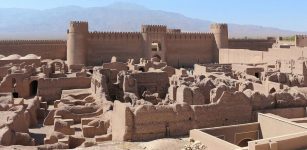 Graves Dated To Achaemenid Or Parthian Empire – Found In Iran
Archaeology | Aug 15, 2018
Graves Dated To Achaemenid Or Parthian Empire – Found In Iran
Archaeology | Aug 15, 2018 -
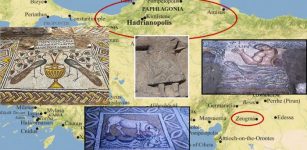 1,800-Year-Old Slab Engraved With Inscription Unearthed In Ruins Of Ancient City Of Hadrianapolis
Archaeology | Jan 5, 2020
1,800-Year-Old Slab Engraved With Inscription Unearthed In Ruins Of Ancient City Of Hadrianapolis
Archaeology | Jan 5, 2020 -
 Strange Ancient Mechanical Flying Animals – Myths Or Advanced Ancient Technology? – Part 1
Featured Stories | Mar 25, 2020
Strange Ancient Mechanical Flying Animals – Myths Or Advanced Ancient Technology? – Part 1
Featured Stories | Mar 25, 2020 -
 Katana ‘Soul Of The Samurai’ – Most Famous Japanese Sword With Long Tradition
Ancient History Facts | Apr 12, 2018
Katana ‘Soul Of The Samurai’ – Most Famous Japanese Sword With Long Tradition
Ancient History Facts | Apr 12, 2018 -
 First Detailed Academic Study Of East African Maritime Traditions Shows Changes In Boatbuilding
Archaeology | May 11, 2022
First Detailed Academic Study Of East African Maritime Traditions Shows Changes In Boatbuilding
Archaeology | May 11, 2022 -
 Mystery Of A 5,000-Year-Old Mass Grave In Poland Reveals A Family Tragedy
Archaeology | May 14, 2019
Mystery Of A 5,000-Year-Old Mass Grave In Poland Reveals A Family Tragedy
Archaeology | May 14, 2019 -
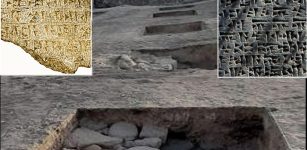 Monumental Structure Unearthed During Excavations Of Urartu-Era Karmir Blur
Archaeology | Nov 25, 2022
Monumental Structure Unearthed During Excavations Of Urartu-Era Karmir Blur
Archaeology | Nov 25, 2022 -
 On This Day In History: The Lumière Brothers Presented Their First Film In Paris – On Dec 28, 1895
News | Dec 28, 2016
On This Day In History: The Lumière Brothers Presented Their First Film In Paris – On Dec 28, 1895
News | Dec 28, 2016 -
 Riddle How Human’s Uniquely DNA Evolved Solved By Scientists
DNA | Jan 13, 2023
Riddle How Human’s Uniquely DNA Evolved Solved By Scientists
DNA | Jan 13, 2023 -
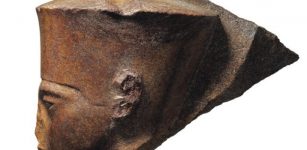 3,000-Year-Old Tutankhamun’s Head Sculpture Is Expected To Be Sold On Thursday In London
Archaeology | Jul 2, 2019
3,000-Year-Old Tutankhamun’s Head Sculpture Is Expected To Be Sold On Thursday In London
Archaeology | Jul 2, 2019 -
 The Great Pyramid And Ancient Egyptian Knowledge Shed Light On Biblical Mysteries – Surprising Information – Part 2
Biblical Mysteries | Nov 27, 2019
The Great Pyramid And Ancient Egyptian Knowledge Shed Light On Biblical Mysteries – Surprising Information – Part 2
Biblical Mysteries | Nov 27, 2019 -
 Underground Catacombs Of Alexandria: Ancient Time Capsule Which Remained Hidden For Almost Two Millennia
Featured Stories | Sep 20, 2016
Underground Catacombs Of Alexandria: Ancient Time Capsule Which Remained Hidden For Almost Two Millennia
Featured Stories | Sep 20, 2016 -
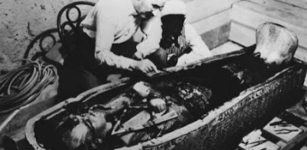 Howard Carter Stole Tutankhamun’s Treasures – Previously Unpublished Letter Reveals
Archaeology | Aug 15, 2022
Howard Carter Stole Tutankhamun’s Treasures – Previously Unpublished Letter Reveals
Archaeology | Aug 15, 2022 -
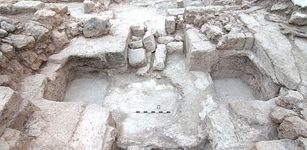 Search For The Elusive Tomb Of The Maccabees – Has The Tomb Finally Been Found?
Civilizations | Sep 23, 2015
Search For The Elusive Tomb Of The Maccabees – Has The Tomb Finally Been Found?
Civilizations | Sep 23, 2015 -
 Unusual Celestial Phenomenon Observed In Ancient Egypt 3,500 Years Ago
Featured Stories | Aug 10, 2015
Unusual Celestial Phenomenon Observed In Ancient Egypt 3,500 Years Ago
Featured Stories | Aug 10, 2015 -
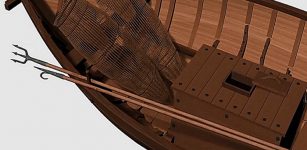 3-D Reconstructions Of Three Wooden Boats Found At Ancient Port In Italy
Archaeology | Jun 23, 2020
3-D Reconstructions Of Three Wooden Boats Found At Ancient Port In Italy
Archaeology | Jun 23, 2020 -
 Unraveling The Mystery Of The Celestial Matrix
Featured Stories | Sep 30, 2021
Unraveling The Mystery Of The Celestial Matrix
Featured Stories | Sep 30, 2021 -
 Inscription At Aquae Calidae Sheds Light On Last Years Of Ancient Thrace’s History
News | Aug 30, 2015
Inscription At Aquae Calidae Sheds Light On Last Years Of Ancient Thrace’s History
News | Aug 30, 2015

